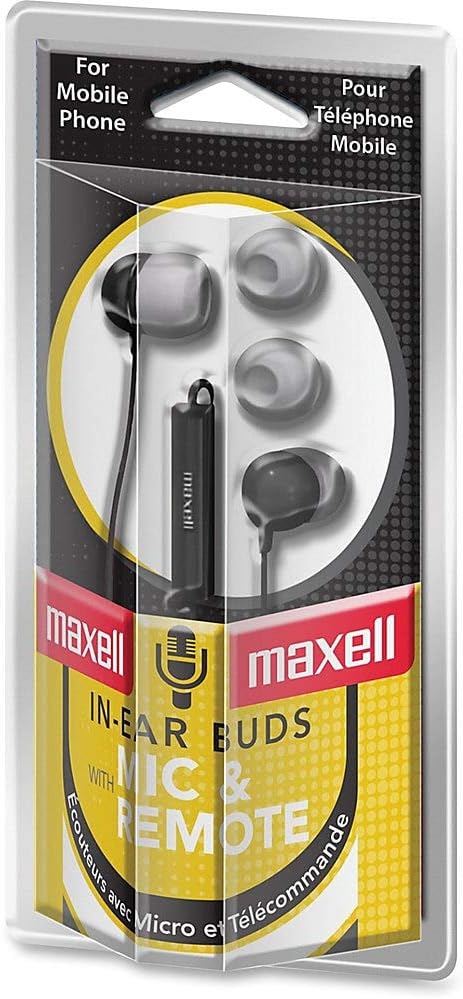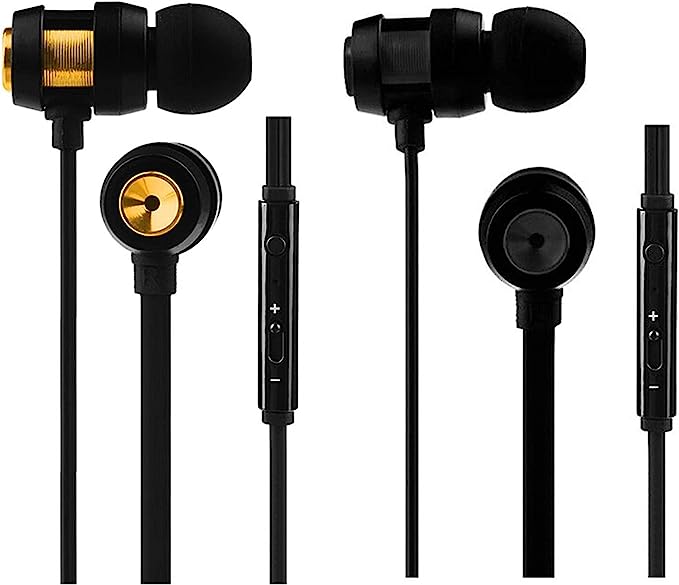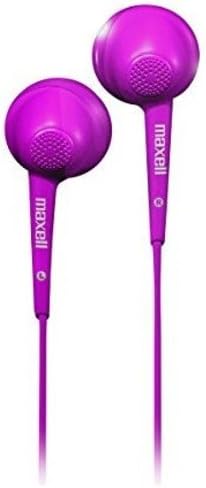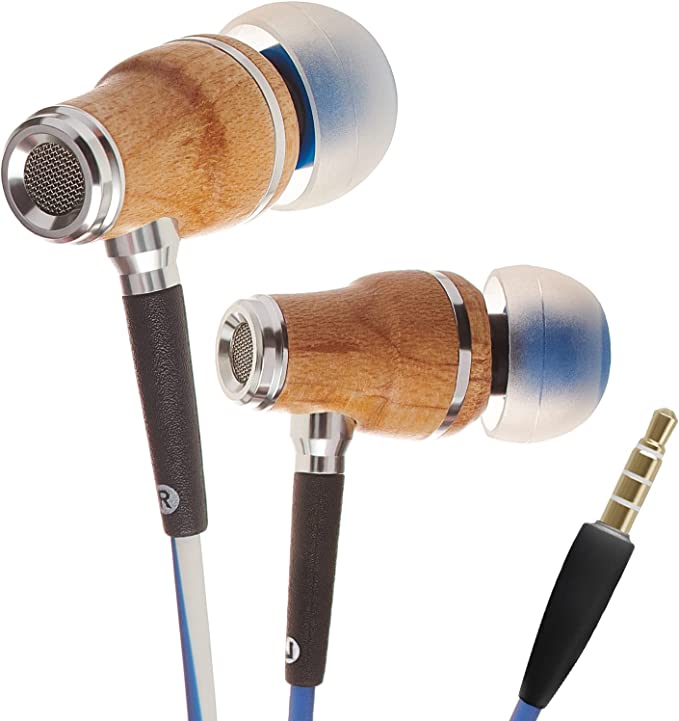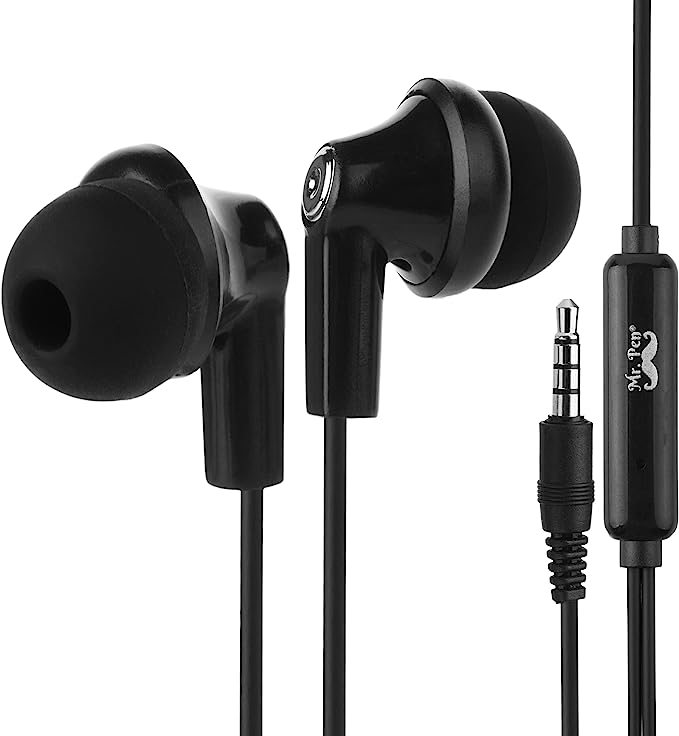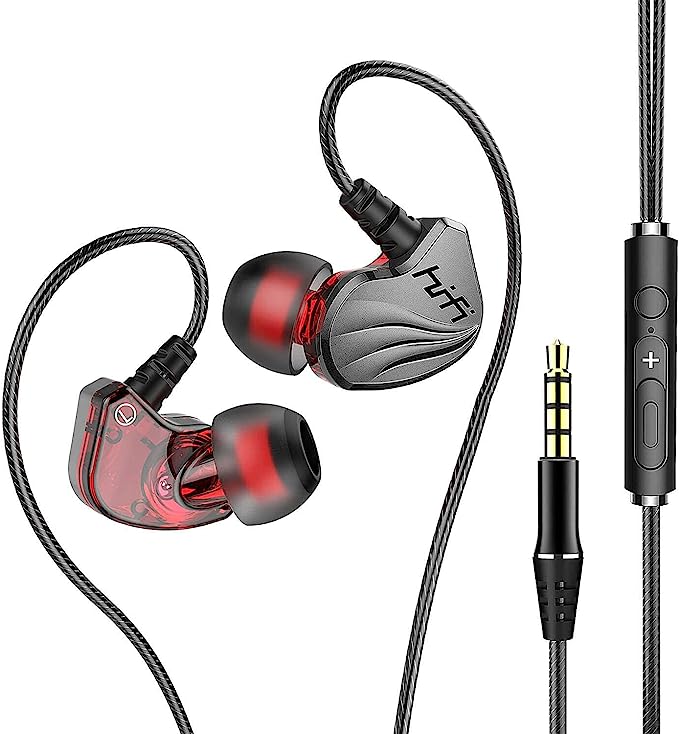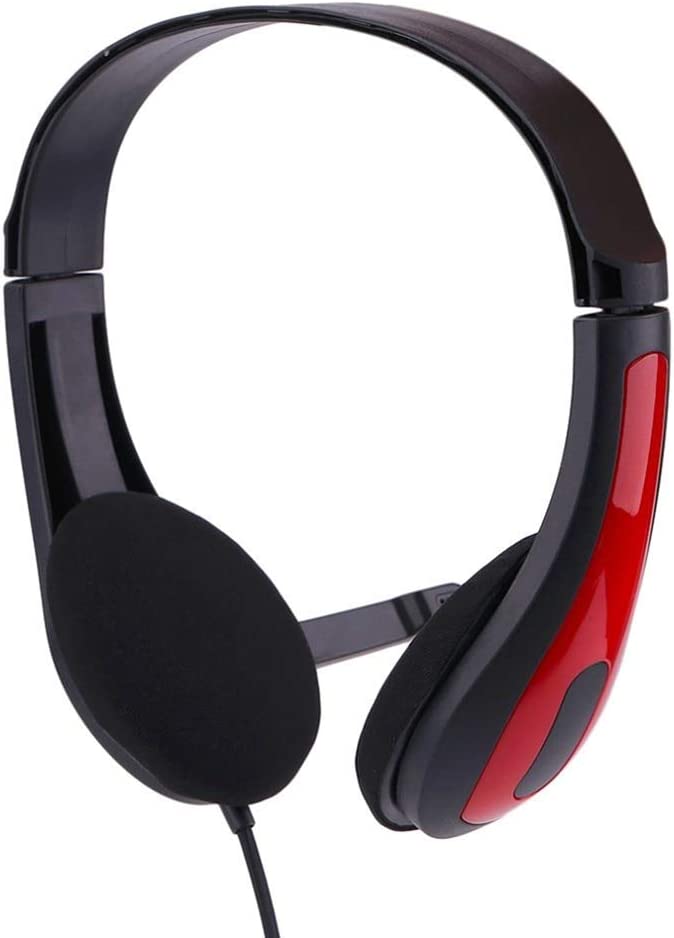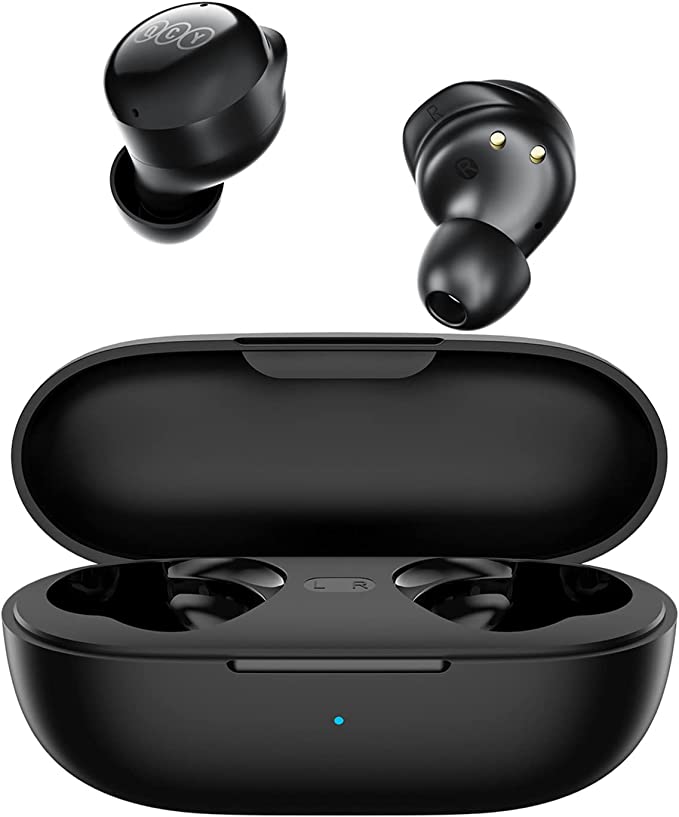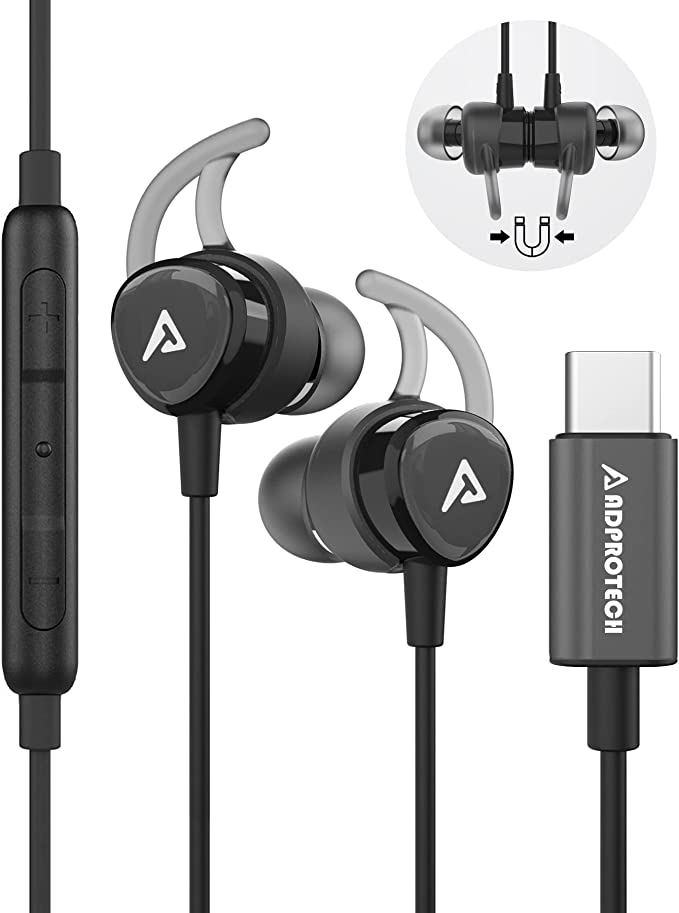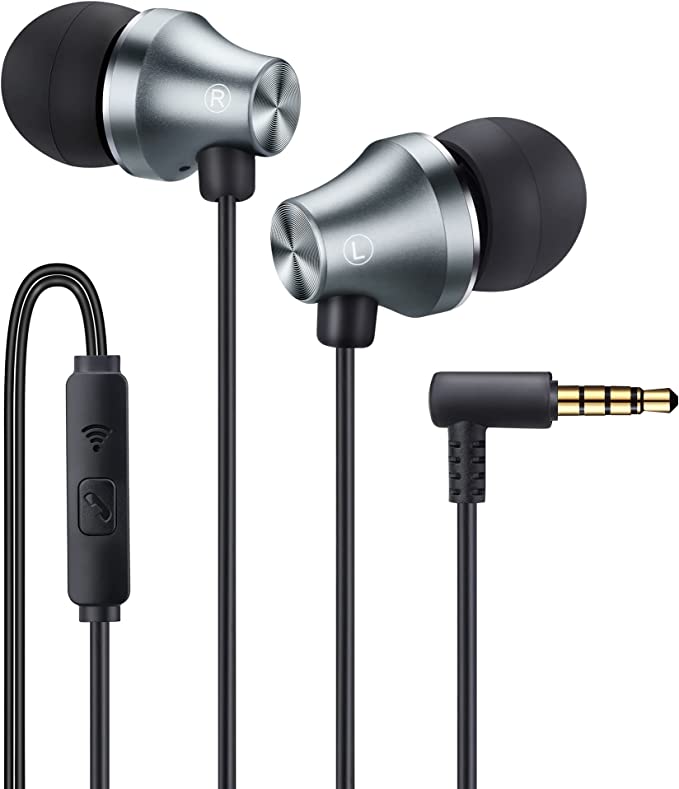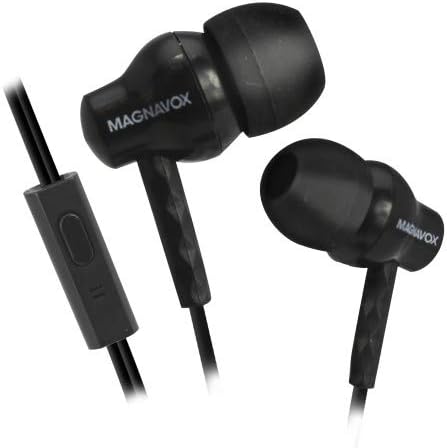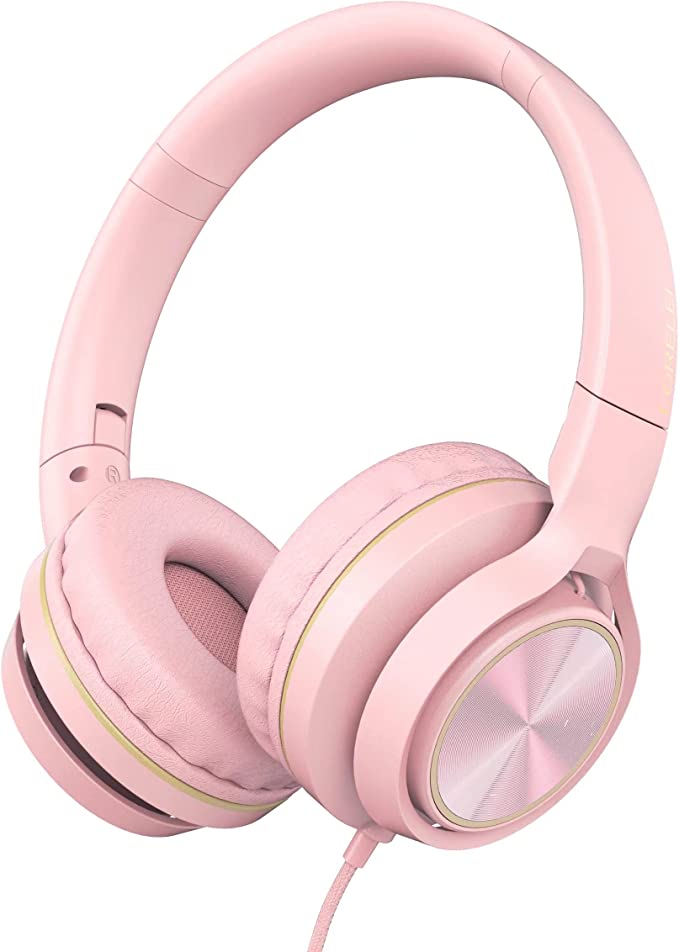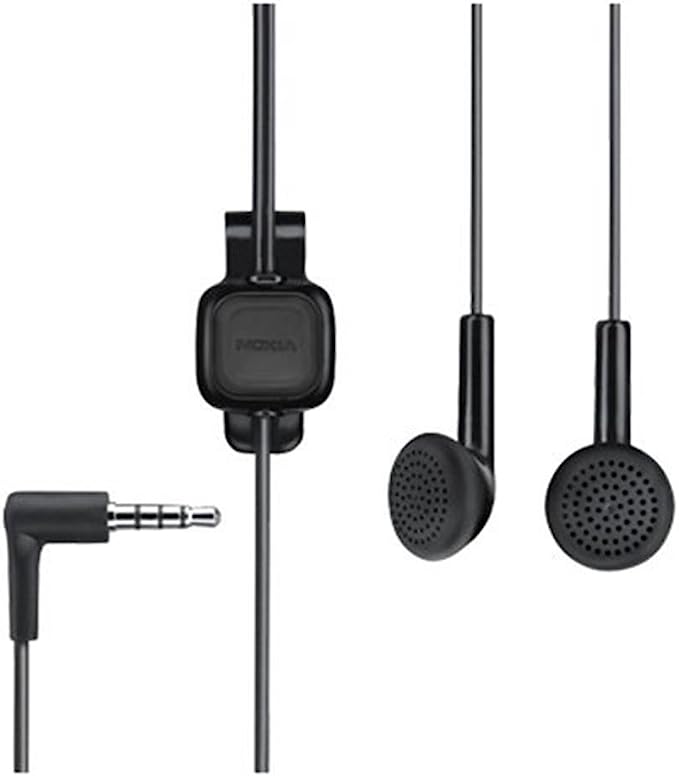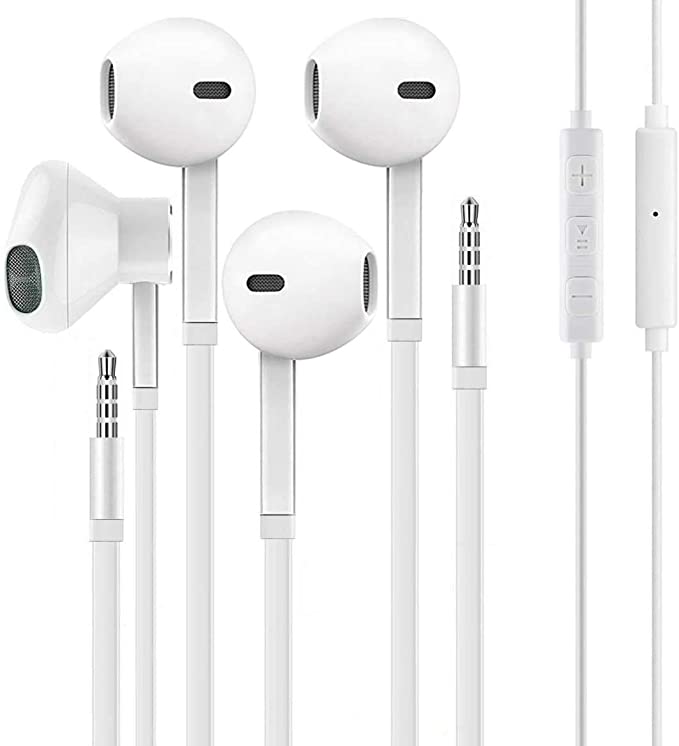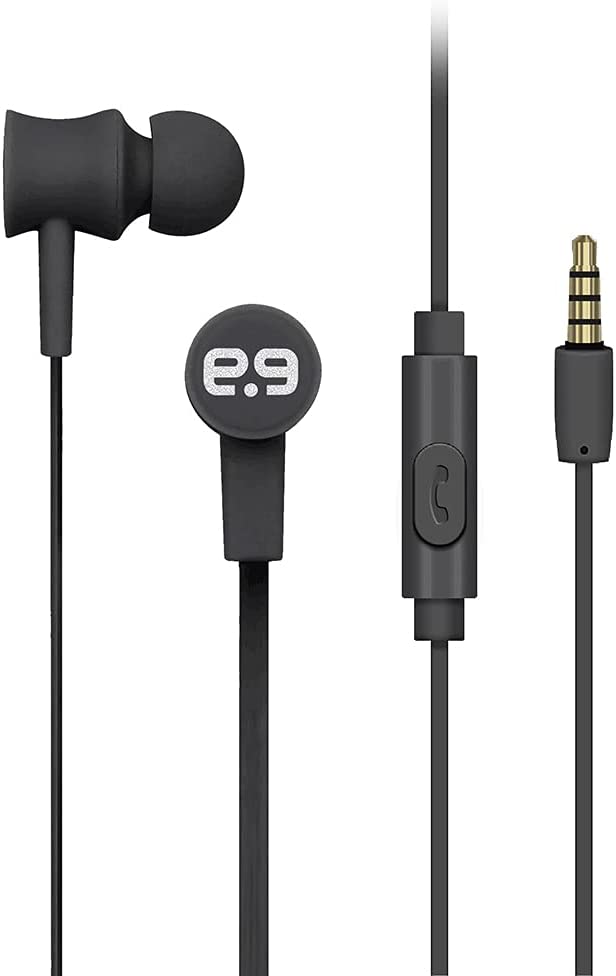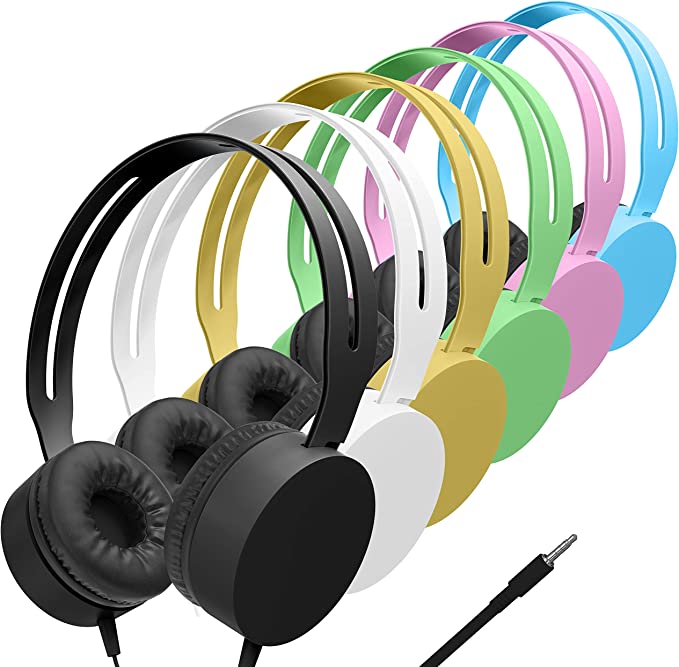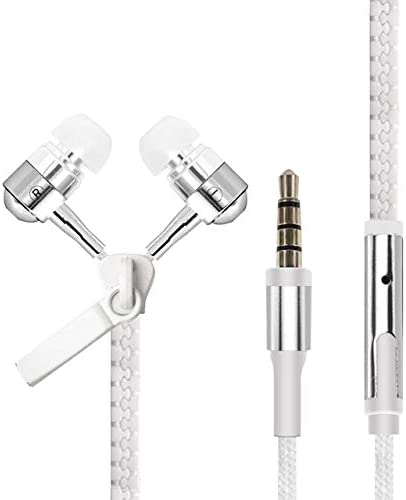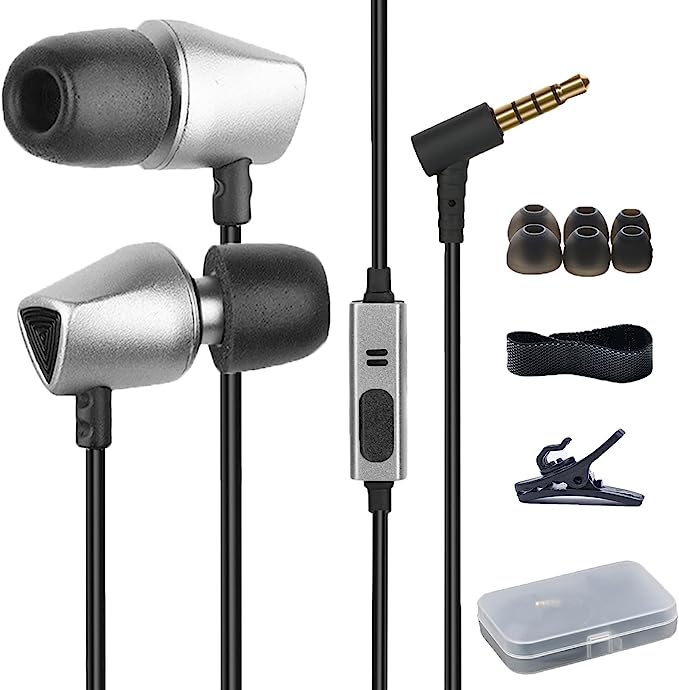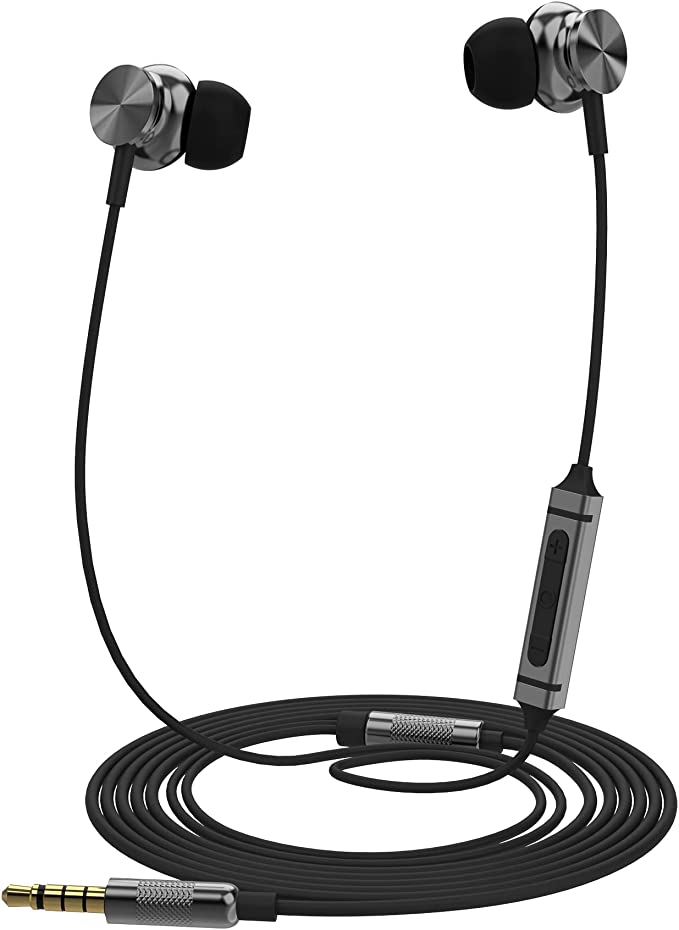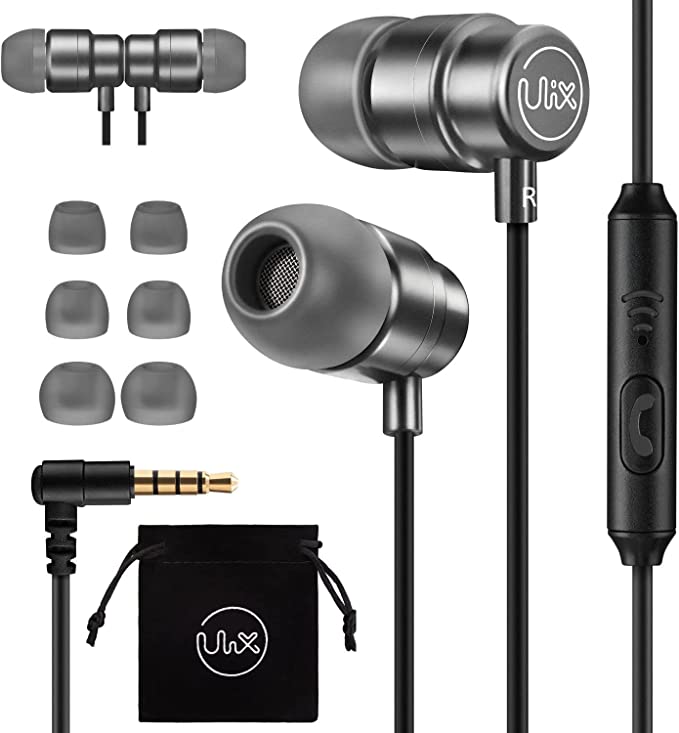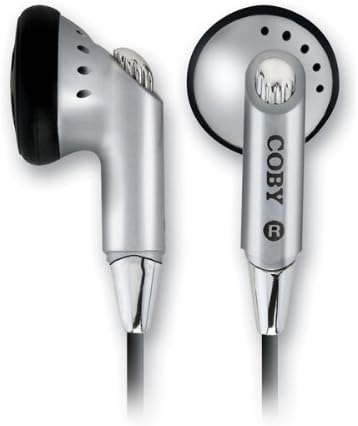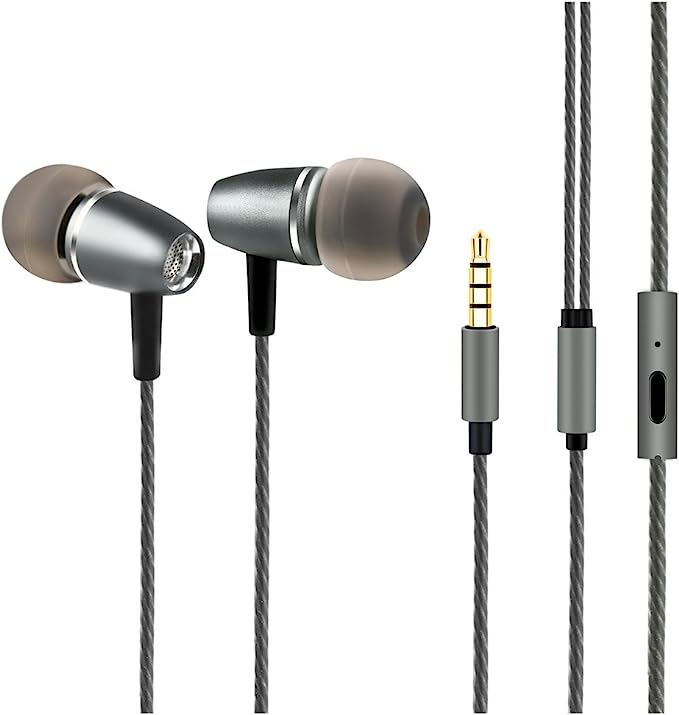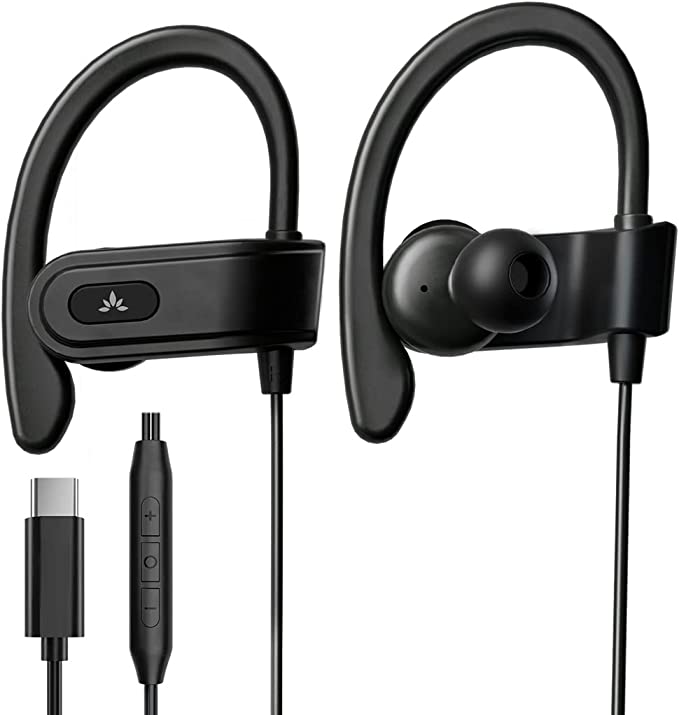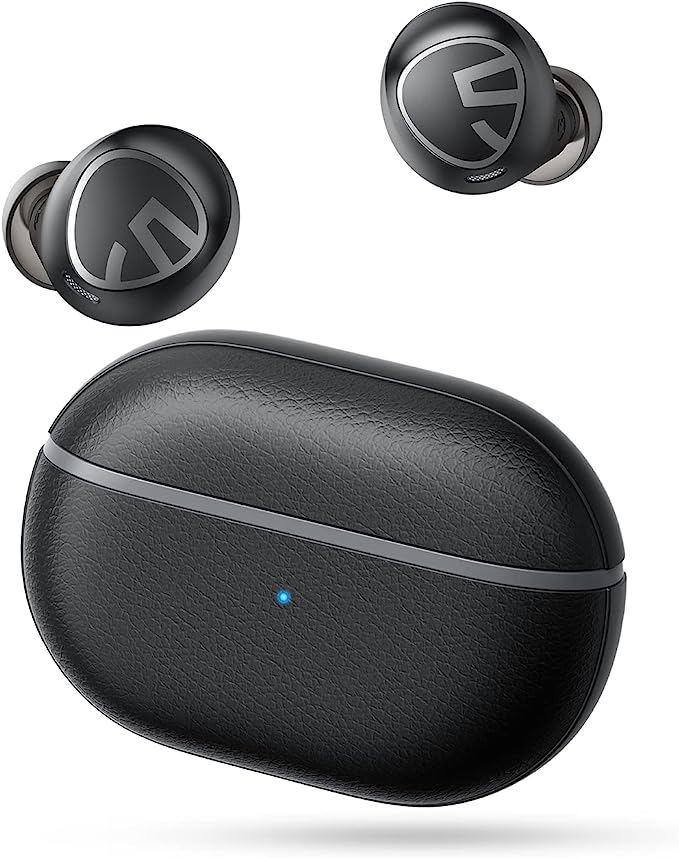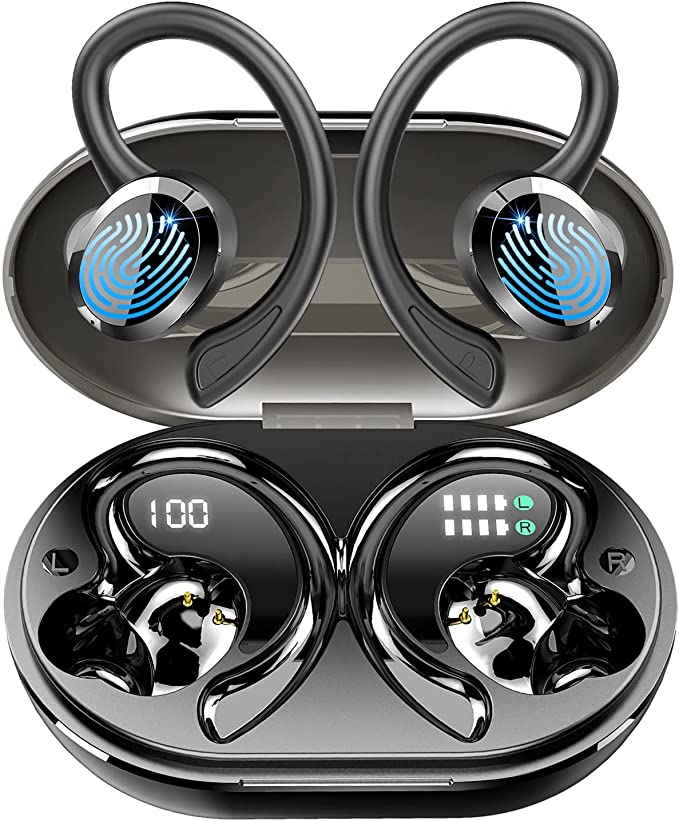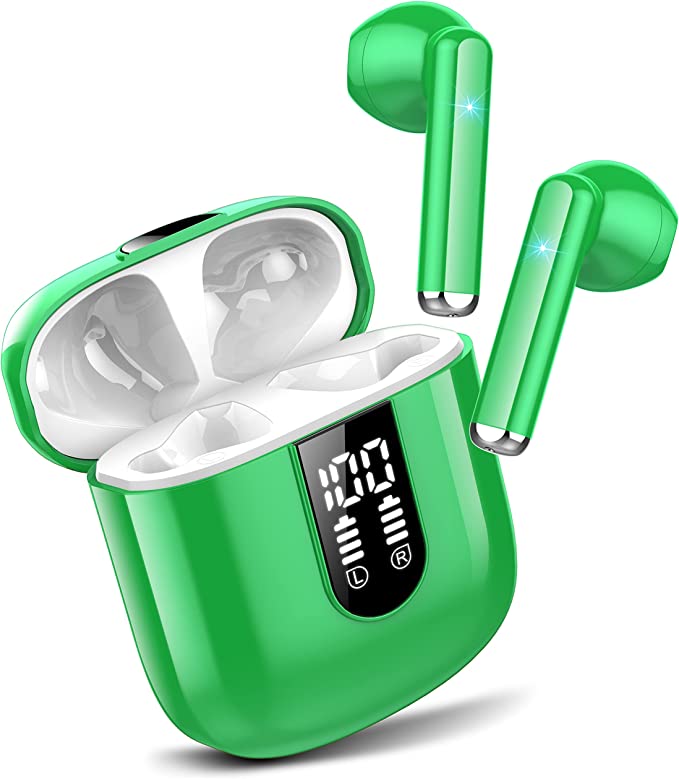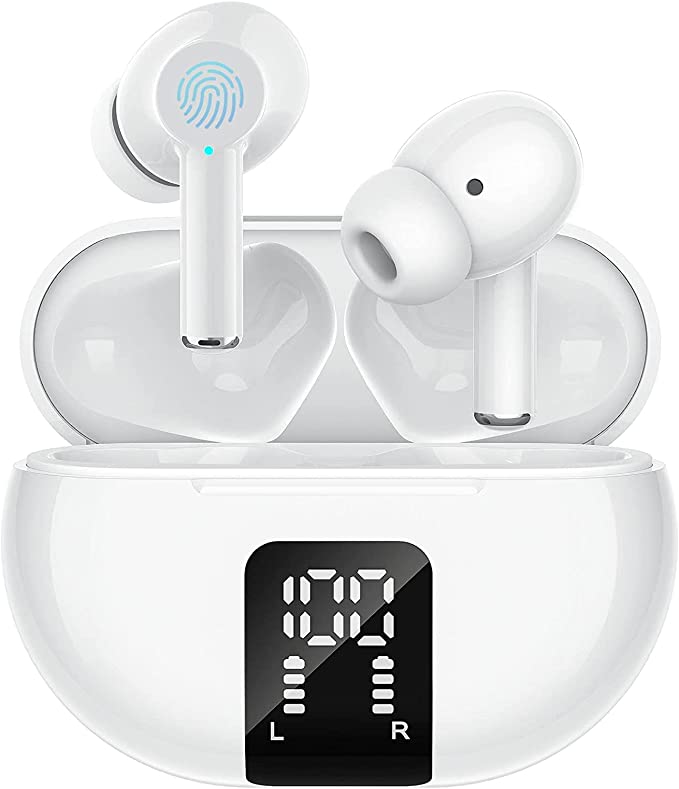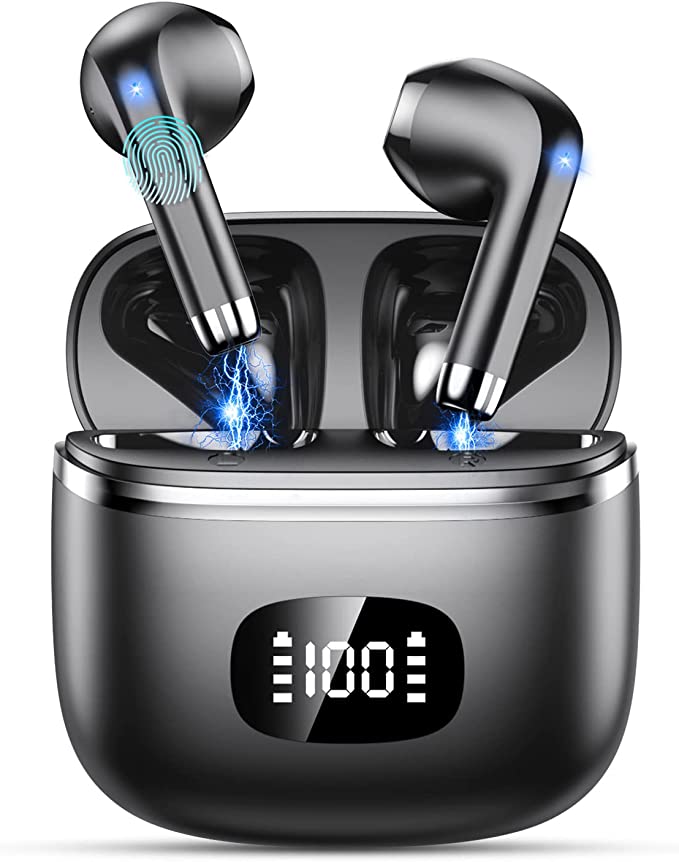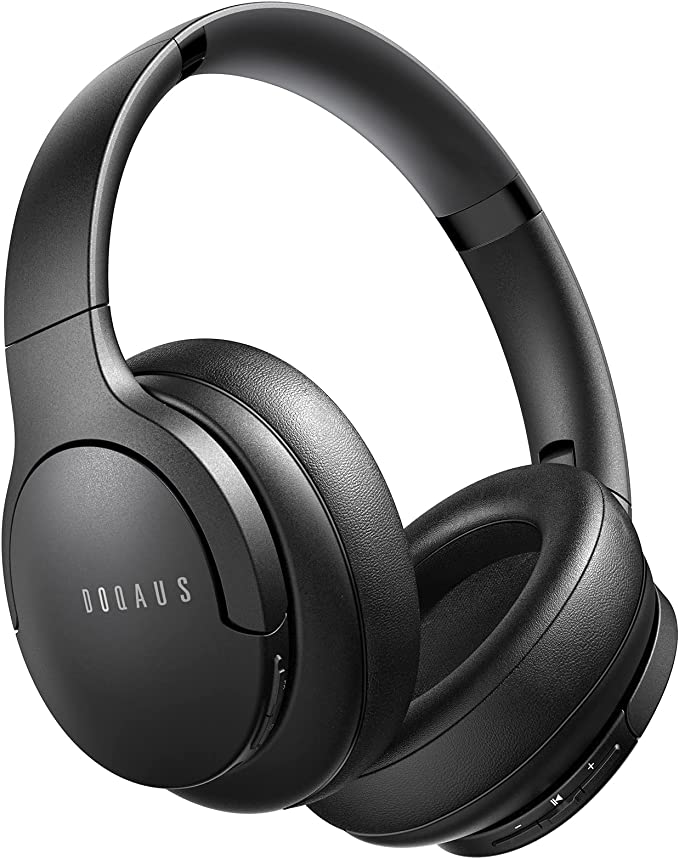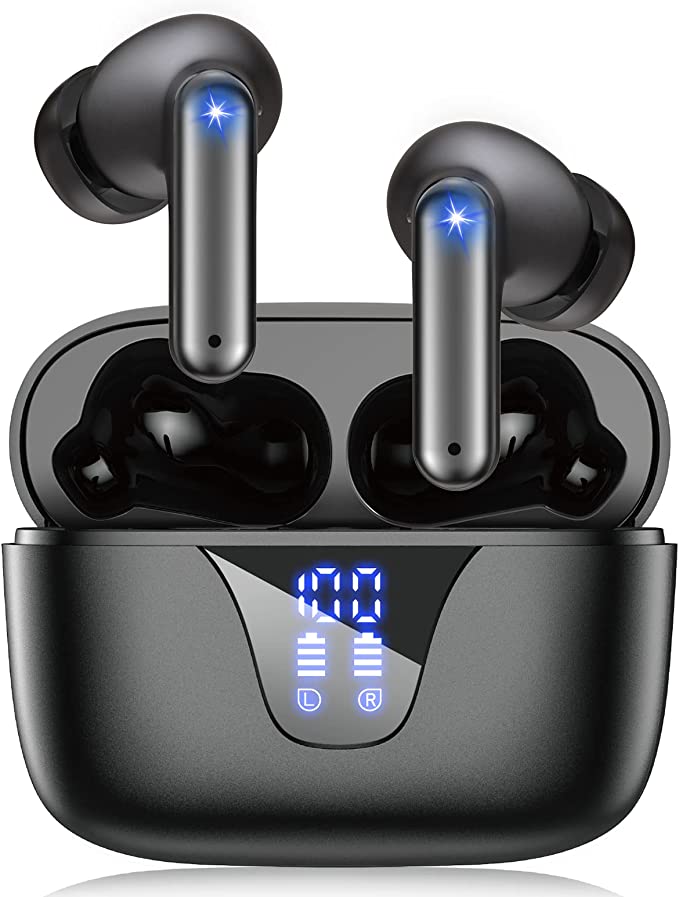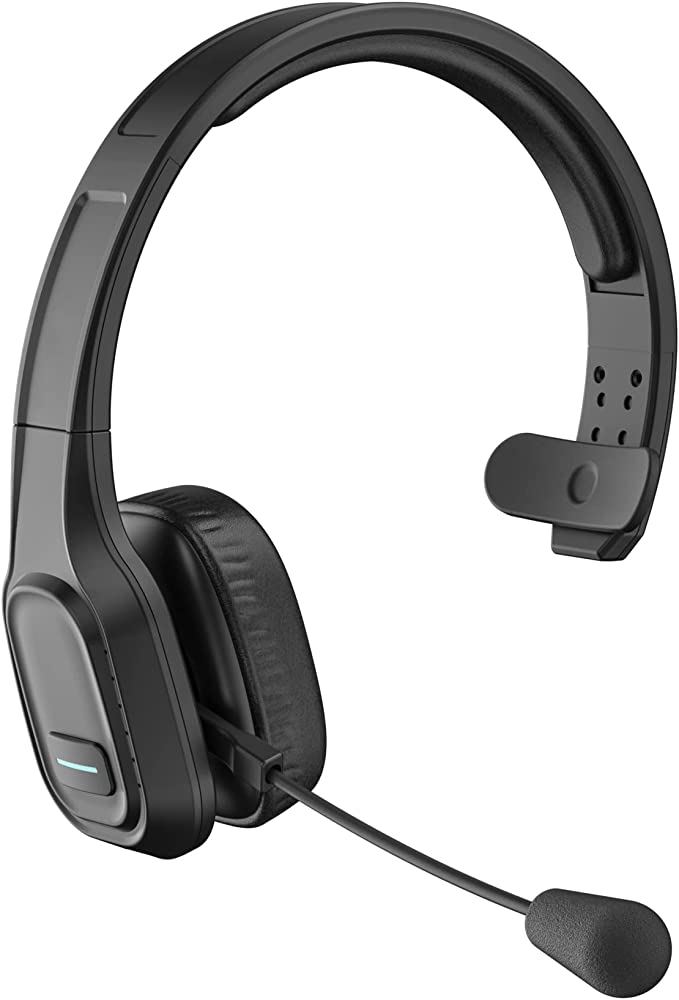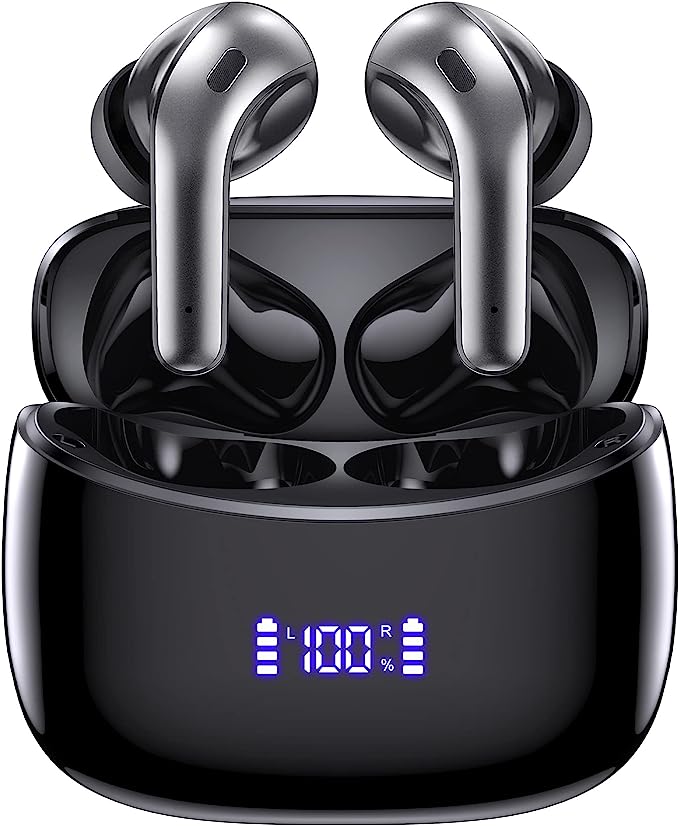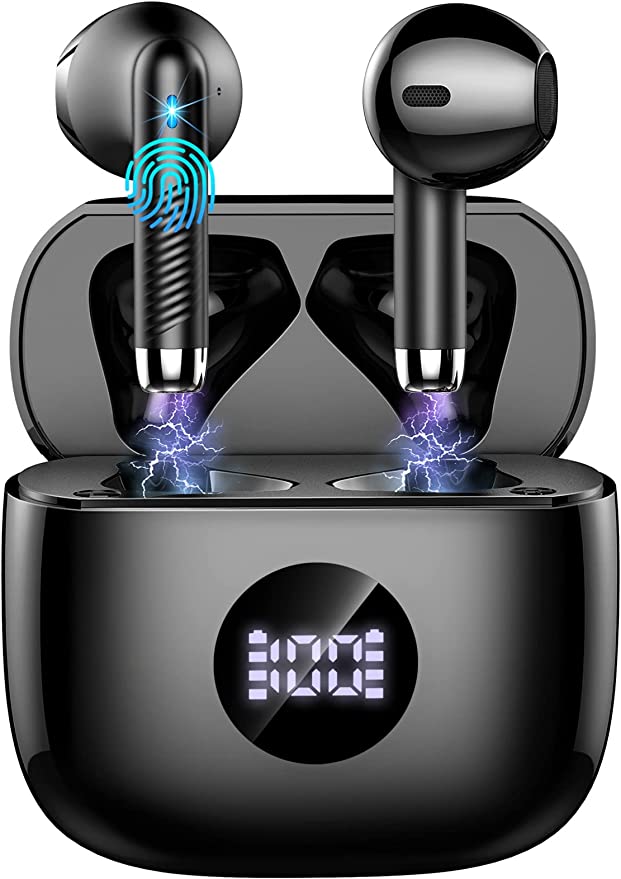Maxell EB125 Earbuds (190568): Your Simple Wired Audio Companion
Update on April 14, 2025, 4:59 a.m.
In our hyper-connected world, brimming with wireless gadgets demanding constant charging and pairing rituals, there’s a certain quiet satisfaction in returning to basics. Sometimes, all you need is a reliable, straightforward way to connect with your audio – music, podcasts, audiobooks – without the fuss. It’s in this space of appreciated simplicity that products like the Maxell 190568 EB125 Digital Stereo Binaural Ear Buds find their enduring relevance. They aren’t trying to compete with the feature-packed titans of the audio world. Instead, they offer a fundamental promise: plug them in, and they just work. Let’s explore the science and sensibility behind this unassuming piece of audio gear.

Feeling the Sound: Featherlight Comfort and the Wired Connection
One of the most immediate, and perhaps surprising, aspects of the EB125 mentioned in its specifications is its weight: a mere 0.01 ounces (listed as item weight). It’s difficult to even conceptualize how light that is. Imagine a single sheet of tissue paper – these earbuds weigh significantly less. This isn’t just a number on a spec sheet; it translates directly to potential comfort. For listening sessions that stretch beyond a few minutes – commutes, study periods, late-night audiobook binges – minimizing the physical presence in your ear can make a world of difference. Heavy earbuds can cause fatigue and pressure points; featherlight ones aim to disappear, letting you focus on the sound, not the sensation.
Complementing this lightweight design is the steadfast reliability of its connection: the classic 3.5mm nickel-plated plug. This humble connector, once the universal standard for portable audio, remains a champion of compatibility and simplicity. There are no batteries to charge, no Bluetooth pairing procedures to navigate, no worries about signal dropouts. It’s a direct, analog pathway for sound. Just plug it into the headphone jack – still found on many laptops, tablets, portable music players, and even some smartphones – and you’re instantly connected. The nickel plating provides decent conductivity and durability against corrosion for everyday use. It’s the epitome of “plug and play.”
The connection is completed by an approximately 3-foot soft-touch rubber cord. Rubber offers flexibility and a degree of resilience. However, as with many basic cords of this type, it might be prone to tangling if not stored carefully. There’s also the phenomenon known as microphonics – where noise from the cable rubbing against clothing can travel up to the ear. The softness of the rubber might mitigate this slightly compared to stiffer plastics, but it’s a characteristic inherent to many wired earbuds, especially budget models. (General knowledge: Microphonics effect).
The Heartbeat of Hearing: Drivers and the Spectrum of Sound
At the core of any earphone, converting electrical signals into the sound waves we hear, lies the driver. The Maxell EB125 utilizes 13.5mm dynamic drivers. Let’s break that down. “Dynamic driver” is the most common type found in headphones and earbuds. Think of it like a miniature version of a traditional loudspeaker. It uses an electromagnet (a voice coil) interacting with a fixed magnet to rapidly move a diaphragm (a thin membrane) back and forth. This vibration pushes air, creating sound waves that travel down your ear canal. (General knowledge: Dynamic driver principle).
The “13.5mm” refers to the diameter of this diaphragm. For an earbud of this classic style (sitting just inside the outer ear, not sealing the canal like an In-Ear Monitor), 13.5mm is relatively large. In theory, a larger diaphragm can move more air, which could potentially translate to a fuller bass response. However, driver size alone doesn’t guarantee sound quality; the driver’s materials, construction, and the acoustic design of the earbud housing play crucial roles. It indicates potential, but the final sound signature depends heavily on the overall engineering and tuning, especially within budget constraints.
This brings us to the specified Frequency Response: 20 Hz - 23,000 Hz. This range describes the theoretical spectrum of sound frequencies the earbuds are designed to reproduce. Hertz (Hz) measures the pitch of a sound – lower numbers mean deeper bass tones, higher numbers mean sharper treble tones. * 20 Hz: This is around the lowest frequency the average young, healthy human ear can perceive. Think of the deep rumble of thunder or the lowest note on a pipe organ. * 20,000 Hz (or 20 kHz): This is generally considered the upper limit of human hearing, representing very high-pitched sounds like cymbal shimmer or the faint hiss from older audio equipment. Hearing sensitivity here diminishes significantly with age. * 23,000 Hz (or 23 kHz): This figure extends slightly beyond the typical human hearing range. While it looks impressive on paper, frequencies this high are inaudible to most people. It’s often more a reflection of measurement capabilities or marketing than a meaningful indicator of audible performance.
What the 20Hz-23kHz spec really tells us is that the EB125 aims to cover the full standard range of human hearing. It suggests the drivers are capable of vibrating at frequencies corresponding to deep bass and high treble. However, it doesn’t tell us how well or how accurately it reproduces those frequencies. A frequency response graph (which is never provided for budget gear) would show peaks and dips, revealing which frequencies are emphasized or recessed, ultimately shaping the earbud’s unique sound character. Don’t mistake the range for balanced, high-fidelity quality across that range.
Painting with Sound: The Magic of Stereo
The product description labels these as “Digital Stereo Binaural Ear Buds.” Let’s unpack “Stereo” first. This is the fundamental technology for creating a sense of space in audio. Instead of a single audio channel (mono), stereo uses two independent channels – left and right. Each channel carries slightly different information, mimicking how our two ears perceive sound in the real world.
Our brain cleverly processes the tiny differences in timing and loudness between the sound arriving at each ear (this is the core of binaural hearing). Stereo recordings leverage this. When sound is panned “left” in a mix, it plays louder in the left channel; when an instrument sounds “distant,” reverb might be added differently to each channel. This creates an illusion of width, depth, and directionality – the “soundstage.” It’s what makes music feel more immersive and movies more engaging than mono sound. The EB125 provides this basic, essential two-channel stereo experience.
What about “Digital” and “Binaural”? In this context, “Digital” is likely a marketing term without technical substance for simple analog earbuds. They receive an analog signal from the 3.5mm jack. “Binaural” technically refers to recordings made with microphones placed in a dummy head to precisely capture how human ears hear, creating incredibly realistic 3D sound when played back on headphones. It’s highly unlikely these budget earbuds employ any special binaural processing; it’s almost certainly another marketing flourish simply meaning “stereo for two ears.” So, expect standard, functional stereo sound.
The Reality Check: Performance, Value, and Listening in the Real World
So, what can you realistically expect when you plug in the Maxell EB125? Given their extremely low price point (listed around $8.20, potentially lower elsewhere) and basic design, high-fidelity audio reproduction isn’t the goal. These are tools built for accessibility and fundamental function.
User feedback, reflected in the average 3.6 out of 5-star rating from 64 global ratings (as per the provided data), paints a picture of this reality, revealing a distinct polarization. * The Positives: Many users appreciate the sheer value. They find the sound quality “okay” or acceptable for the price, and the volume level sufficient. Some reviewers explicitly mention a “good fit,” highlighting that the classic earbud shape can work well for some ear anatomies. The lightweight nature likely contributes to positive comfort experiences for these users. * The Negatives: A significant portion of users report issues with durability, stating the earbuds “don’t last long.” Common failure points in budget wired earbuds often involve the cable near the plug or the earpieces due to stress. Fit is another major point of contention; reviewers mention them being too small to stay in or generally uncomfortable, indicating the fixed size and shape isn’t universally accommodating. There are also mentions of the received product’s appearance (color, packaging) not matching the listing image, suggesting potential inconsistencies.
This mixed feedback underscores a crucial point: value is subjective and depends heavily on individual needs, expectations, and even ear shape. Durability concerns highlight the trade-offs often made to achieve such a low price point.
Where does the EB125 excel? It embodies the “good enough” principle for specific scenarios. Need a dirt-cheap backup pair for your bag in case your main wireless buds die? Listening to a podcast or audiobook where intricate sound detail isn’t paramount? Using an older MP3 player or a library computer with only a 3.5mm jack? Working in a quiet environment where noise isolation isn’t needed (as this style offers very little)? In these contexts, the EB125’s simplicity, low cost, and basic functionality might be precisely what’s required.
Conclusion: Embracing Simplicity in Sound
The Maxell EB125 (190568) isn’t trying to revolutionize your audio experience. It’s a throwback, a testament to the enduring utility of simple, wired sound. Its ultra-lightweight design promises comfort, the 3.5mm plug offers universal (if diminishing) compatibility and reliability, and its dynamic drivers deliver fundamental stereo audio covering the basic hearing range.
It’s not without its potential drawbacks – questions about long-term durability, a fit that won’t suit everyone, and sound quality that matches its budget price tag are all part of the equation.
Ultimately, the EB125 finds its niche with those who prioritize affordability and simplicity above all else. If you need a no-frills, plug-and-play audio solution for basic listening tasks, as a backup, or for devices lacking Bluetooth, these earbuds represent one of the most accessible options available. In a world constantly pushing for more features, more complexity, and higher prices, there’s a certain quiet confidence in a product that just does the simple job it was designed for. Sometimes, that’s exactly what you need.
